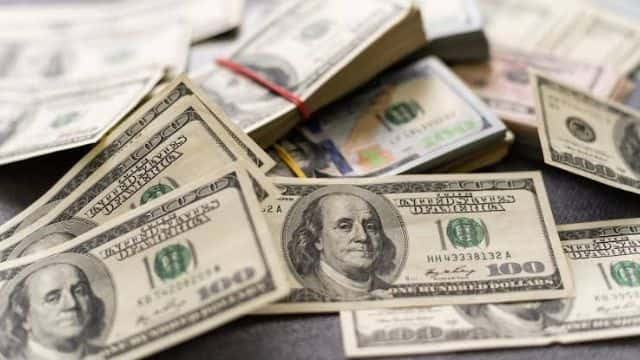Is the US economy currently in a recession after two consecutive quarters of negative growth? President Joe Biden is undoubtedly in the “No” camp, and opinions are sharply divided.
These days, especially within the Biden administration, the “R” word is regarded as vulgar in some parts of Washington.
There has been a ferocious debate about politics as well as economics surrounding the very definition of a recession and when it starts.
The Commerce Department reported that the gross domestic product fell at an annual rate of 0.9% in the second quarter, following a larger decline of 1.6% in the first three months of 2022. The US President responded on Thursday (July 28): “That doesn’t sound like a recession to me.”
Even though it isn’t the official definition, two consecutive quarters of negative growth are frequently seen as a strong indicator that a recession is beginning.
However, the veteran Democrat’s government has been working hard for a week to explain why the term does not apply.
The White House asked in a blog post last week, ostensibly trying to get a head start on Thursday’s data release, “How do economists determine whether the economy is in a recession?”

Despite some claims, the White House stated that neither the official definition nor the way economists assess the state of the business cycle use two consecutive quarters of falling real GDP to define a recession.
Naturally, opposition Republicans immediately seized upon the spin.
The Republican National Committee issued a statement on Monday with the headline, “Newsflash for Joe Biden: You can’t change reality by arguing over definitions.”
A single official arbiter
What exactly is a recession, outside of political spin?
There is “no official definition of recession,” the International Monetary Fund insists in a statement on its website.
According to the global lender based in Washington, “most commentators and analysts use two consecutive quarters of declining real (inflation-adjusted) gross domestic product as a practical definition of recession.”
According to Pierre-Olivier Gourinchas, the head economist of the IMF, “the general assessment as to whether the economy is in a recession overall is a little bit more complex.”
According to International Economics and Bloomberg Economics, it is “wrong” to consider an economy to be in a recession after two consecutive quarters of negative GDP growth.
Mr Wilcox told AFP, “I kind of cringe and resist every time I see (that definition)”.
The National Bureau of Economic Research (NBER) is the only recognized authority on recession timing in the United States.
Having arrived after the event had already started?
The NBER was established in 1920 to advance research on the US economy. It is a private, impartial, and nonpartisan organization.
It’s Business Cycle Dating Committee analyzes a variety of data to determine whether the economy is expanding or contracting.
The NBER defined a recession as the time between an economic activity peak and its ensuing trough, or lowest point, on its website
Read more:-
- What’s included and excluded in the Democrats’ plan to combat inflation?
- Read the complete agreement that Manchin and Schumer just reached to tackle climate change, reduce inflation, and tax businesses.
- What’s included and excluded in Democrats’ $739 billion programme to combat inflation
The NBER definition emphasizes that a recession entails a sizable decrease in economic activity that is widespread throughout the economy and lasts for more than a few months.
It can appear a little late to the party, though, because the bureau prefers to base its analysis on reliable data and release its opinion several months after the numbers are made public.
According to Dr Ellen Hughes-Cromwick, an economist at the left-leaning think tank Third Way, the NBER’s customary delay is “not a problem” rather it is a method that enables the bureau to avoid making the same changes repeatedly.
Economic experts are aware that less than 50% of the actual statistics are included in each quarter’s preliminary estimate, she said.


